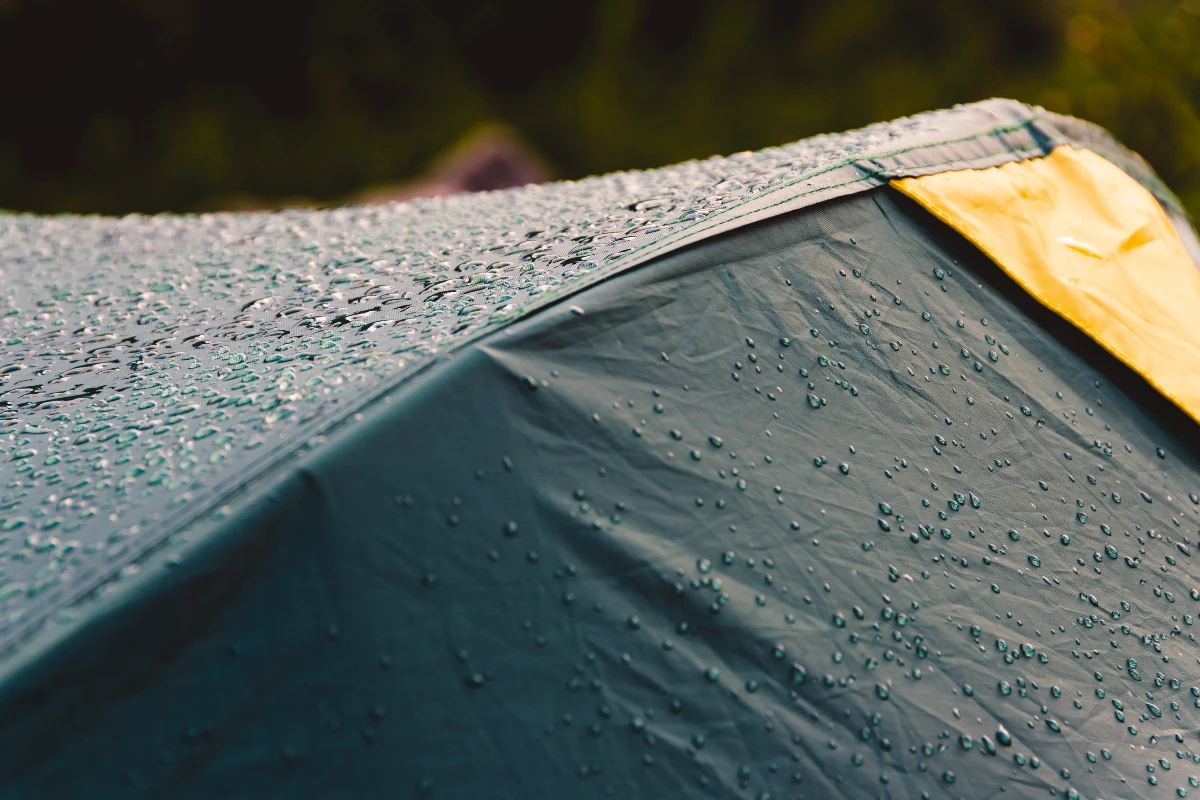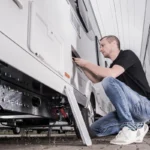Camping is a favorite pastime for many, offering a chance to connect with nature and escape the daily grind. However, wet weather can quickly turn a peaceful camping trip into a soggy challenge. If you’re unprepared, rain can make your camping experience uncomfortable and difficult. That’s why it’s crucial to be equipped with the necessary knowledge and gear to handle wet weather while camping.
Key Takeaways
Before diving into the details, here are some key takeaways to keep in mind when taking down a tent in the rain:
- Plan ahead and prepare for wet weather when taking down your tent.
- Assess the rain and determine if it’s safe to take down your tent.
- Clear the area of obstacles and debris before disassembling the tent.
- Disassemble the tent piece by piece to avoid damage and make packing easier.
- Stay dry by using proper rain gear and techniques while taking down the tent.

Planning Ahead: Preparing for Wet Weather
One of the most important steps in preparing for wet weather while camping is checking the weather forecast before you go. This will give you an idea of what to expect and allow you to plan accordingly. If rain is in the forecast, make sure to pack rain gear such as waterproof jackets, pants, and boots. It’s also a good idea to bring extra tarps that can be used to create additional shelter or cover for your tent.
Assessing the Rain: Determining if it’s Safe to Take Down
Before you begin taking down your tent, assess the weather conditions to ensure it’s safe to proceed. If the rain is light or drizzling, it may be safe to start taking down the tent. However, if there is heavy rain or thunderstorms, it’s best to wait until the weather improves before attempting to take down your tent.
During the takedown process, it’s important to stay safe. Make sure to wear appropriate rain gear and non-slip shoes to prevent accidents. If there is lightning or thunder, seek shelter immediately and wait until the storm passes before continuing with taking down your tent.
Clearing the Area: Removing Obstacles and Debris
Before taking down your tent in wet weather, it’s crucial to clear the area of any obstacles and debris that could cause damage or injury. Fallen branches, rocks, and other debris can be hazardous, especially in wet conditions. Take the time to carefully inspect the area around your tent and remove any potential obstacles.
To remove fallen branches and debris, use gloves and be cautious of sharp objects. If there are large rocks or other heavy objects in the way, consider asking for assistance from fellow campers to ensure safe removal.
Disassembling the Tent: Breaking it Down Piece by Piece
Taking down a tent in wet conditions requires a careful, systematic approach to avoid mistakes and ensure efficiency. Start by removing any stakes or pegs from the ground and carefully fold them up. Next, detach the rainfly from the tent body and fold it separately. If the rainfly is wet, try to shake off as much water as possible before folding it.
Once the rainfly is removed, start taking down the tent poles one by one. Carefully collapse each pole and set them aside. Finally, remove the tent body from the ground and fold it up neatly. It’s important to take your time during this process to avoid damaging the tent or getting wet.
Staying Dry: Tips for Protecting Yourself from the Rain
While taking down your tent in wet weather, it’s crucial to protect yourself from getting wet. Wear waterproof clothing such as a rain jacket and pants to keep yourself dry. Additionally, consider using tarps or other waterproof materials to create a temporary shelter over your work area. This will provide some protection from the rain while you disassemble your tent.
Dealing with Wet Gear: Properly Packing and Storing Your Tent
Properly packing and storing your tent after a wet takedown is crucial to preventing mold and mildew. Start by shaking off any excess water from the tent body and rainfly. If possible, hang them up to dry before packing them away. If you don’t have the opportunity to dry them immediately, make sure to unpack and dry them as soon as you get home.
When packing your wet tent, avoid storing it in an airtight container or bag. This can trap moisture and lead to mold growth. Instead, use a breathable storage bag or hang the tent in a well-ventilated area to allow it to dry completely.
Teamwork, FTW!
Taking down a tent in wet weather is much easier with teamwork. Assign specific tasks to each person to ensure that everything is done efficiently. For example, one person can focus on removing stakes and pegs, while another can take down the tent poles. By working together, you can minimize the time spent in the rain and make the process more manageable.
Adapting Your Method to the Weather Conditions
Weather conditions can change rapidly, especially when it’s raining. It’s important to be flexible and adapt your takedown method accordingly. If the rain becomes heavier or there are strong winds, consider pausing the takedown process until the weather improves. It’s better to wait for a brief break in the rain than risk damaging your tent or getting injured.
Post-Takedown Care: Drying and Maintaining Your Tent for Future Use
Once you have successfully taken down your tent in wet weather, it’s important to properly dry and maintain it for future use. Hang the tent and rainfly in a well-ventilated area to allow them to air dry completely. Avoid storing them away if they are still damp, as this can lead to mold and mildew growth.
After the tent is dry, inspect it for any damage or wear and tear. Repair any small tears or holes using a tent repair kit. It’s also a good idea to clean the tent before storing it away. Use a mild soap and water solution to remove any dirt or stains, and make sure to rinse it thoroughly.
Recap
Taking down a tent in wet weather can be challenging, but with the right preparation and approach, it can be done safely and efficiently. Remember to check the weather forecast before camping, pack appropriate rain gear, and bring extra tarps for added protection. Assess the rain and determine if it’s safe to take down your tent, and make sure to clear the area of any obstacles or debris.
When disassembling your tent, take your time and follow a systematic approach. Protect yourself from the rain by wearing waterproof clothing and using tarps for shelter. Properly pack and store your wet tent to prevent mold and mildew growth, and collaborate with others to make the process easier. Take breaks when needed, adjust your approach based on the weather conditions, and properly dry and maintain your tent for future use.
By being prepared and following these tips, you can confidently manage wet weather during your camping trip and ensure a safe and enjoyable experience, no matter the conditions.









